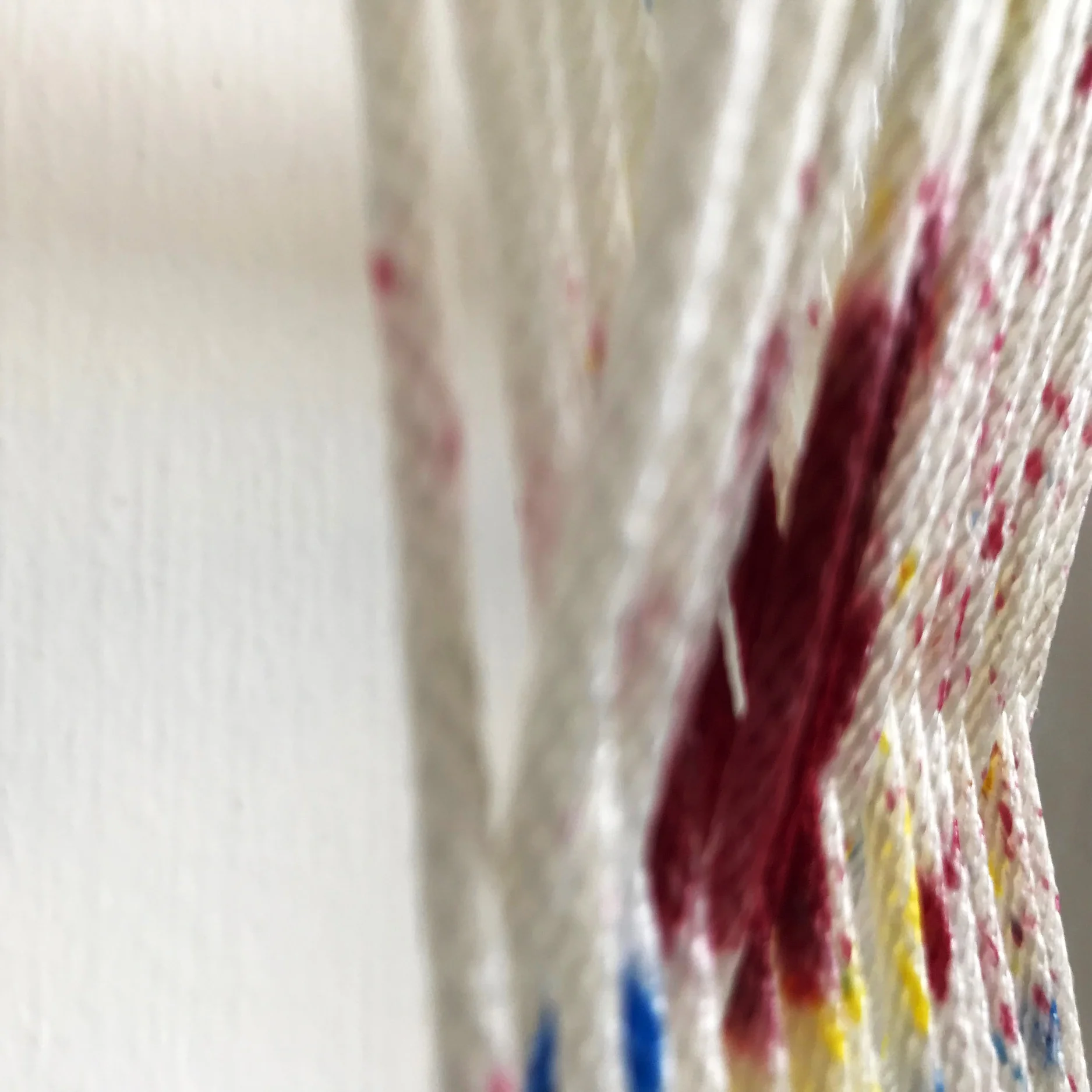Movement
Designer PATAPIAN
PATAPIAN
PATAPiAN is woven decorative items which combine craft practices with contemporary aesthetics. PATAPiAN products are based on the idea of re-interpretation and creativity that draw inspiration from nature, narrative and everyday life. By using several materials and new method of making make the products that are strong and unique identity.
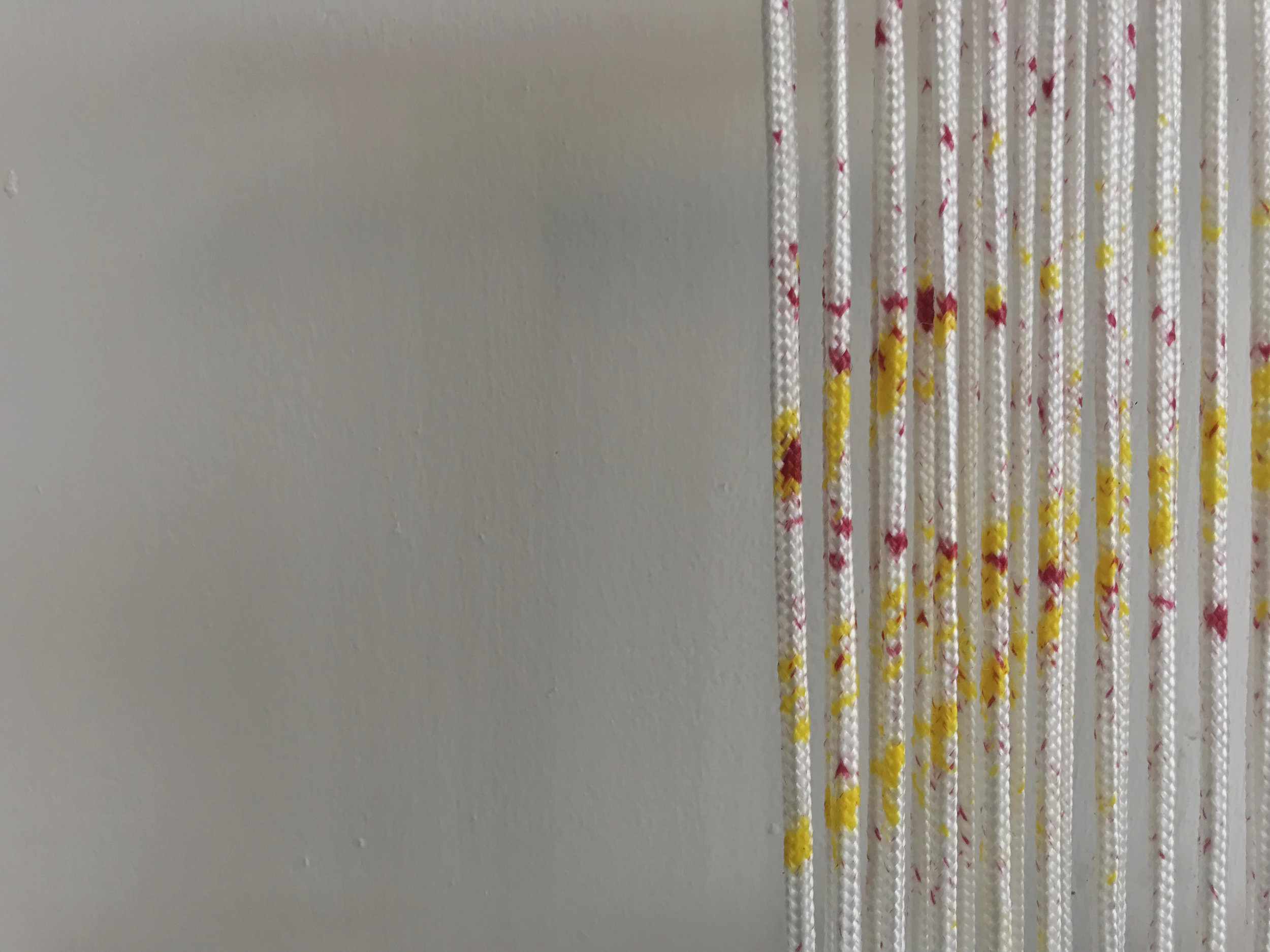
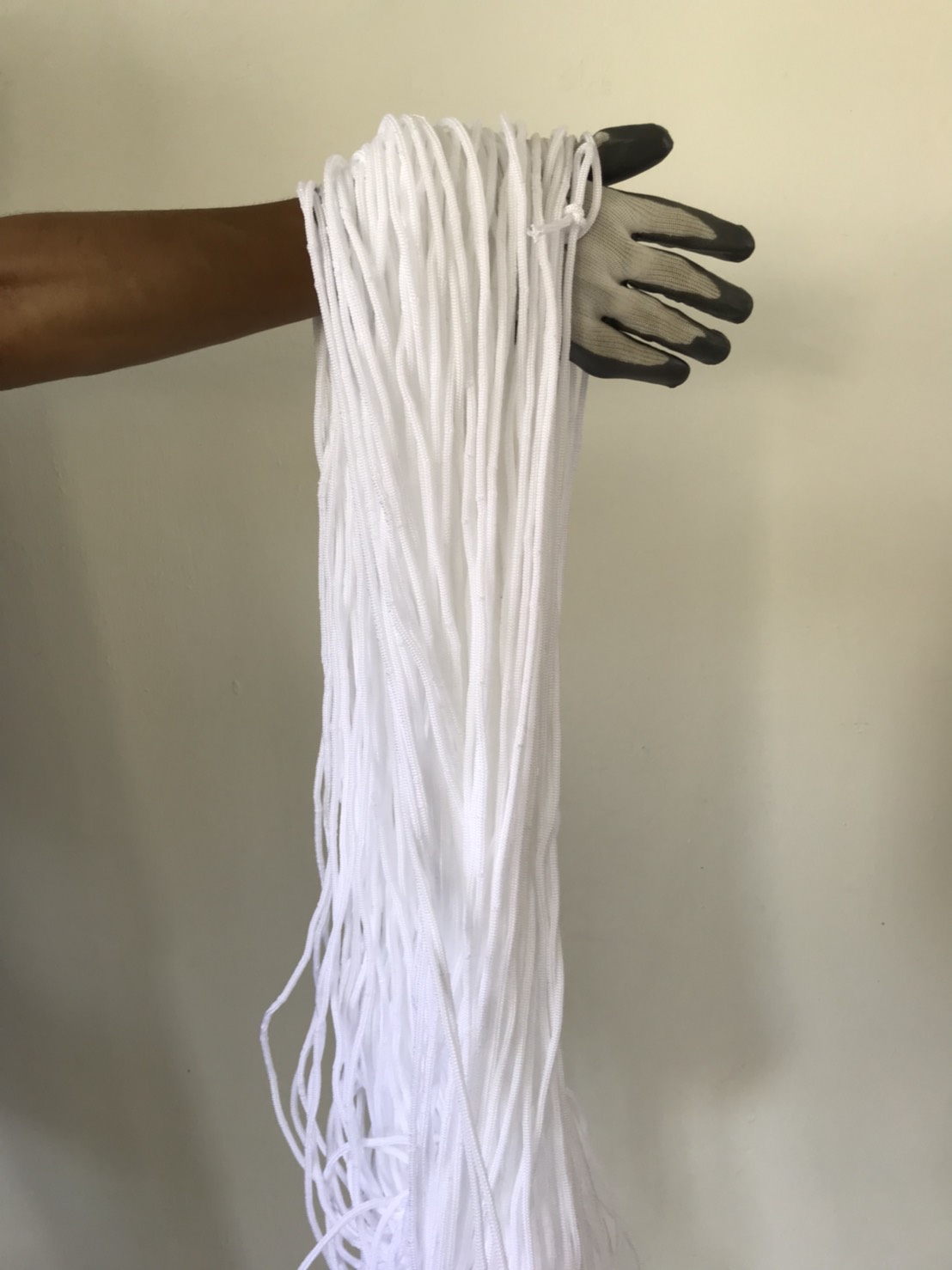
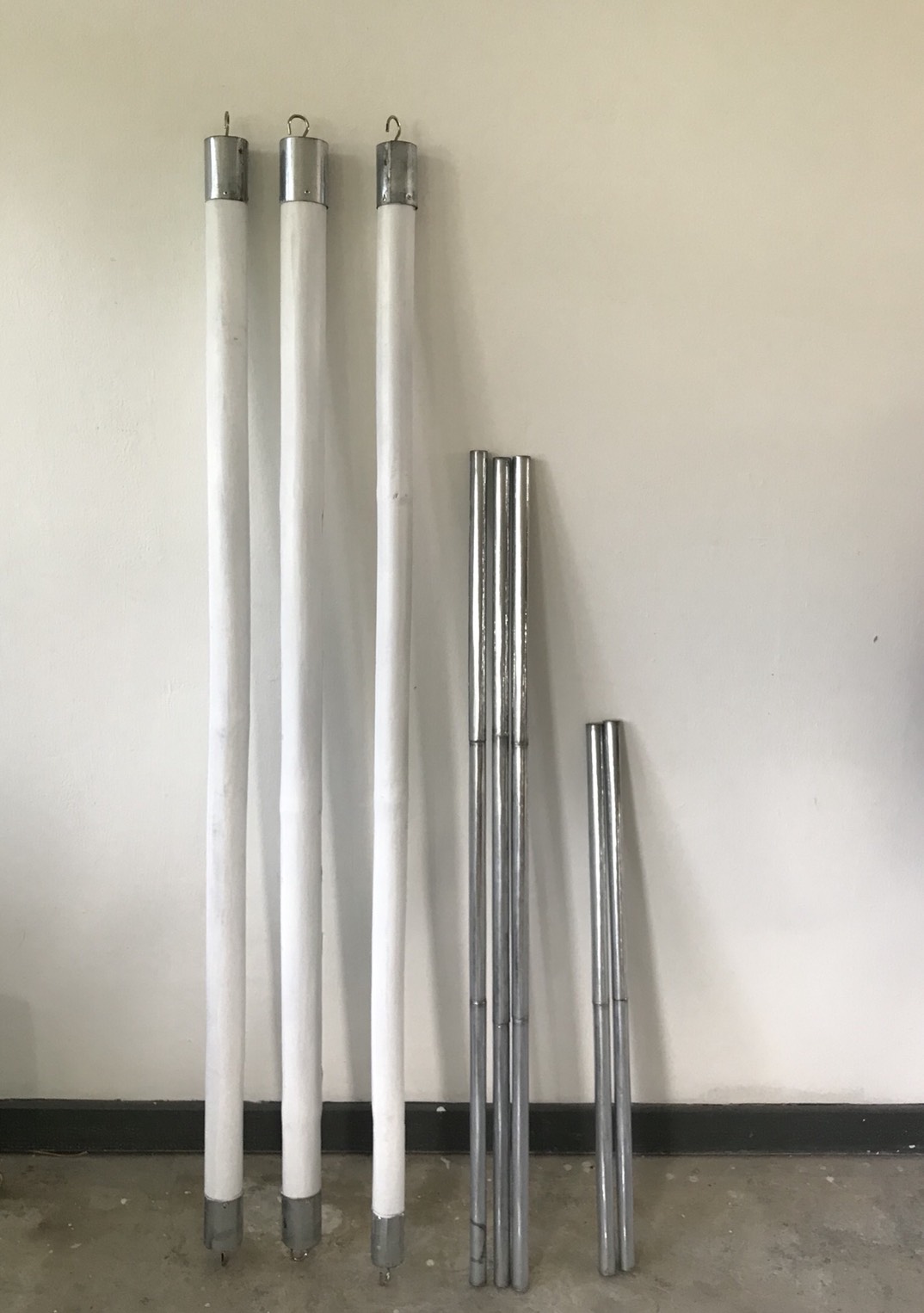
Concept of Movement
Movement is inspired by ngajat dance, which is a traditional dance of Sarawak's Iban people. The people of Sarawak share stories of their daily lives through dancing. They translate a lot of their daily activities into body language. The movement of the dancers portray their culture and tradition. Ngajat is the dance to celebrate the Gawai festival, as well as celebrating victory in battle. The ngajat dancer, performed aggressively by a male, depicts a man going to war, or a bird flying. The ngajat which women perform is made of soft, graceful movements with very precise body turns. We re-interpret their body movement, posture, rhythm, hand gestures, voice tone and facial expressions through structure, weaving patterns and colour to present the beauty of the Bornean way of life.
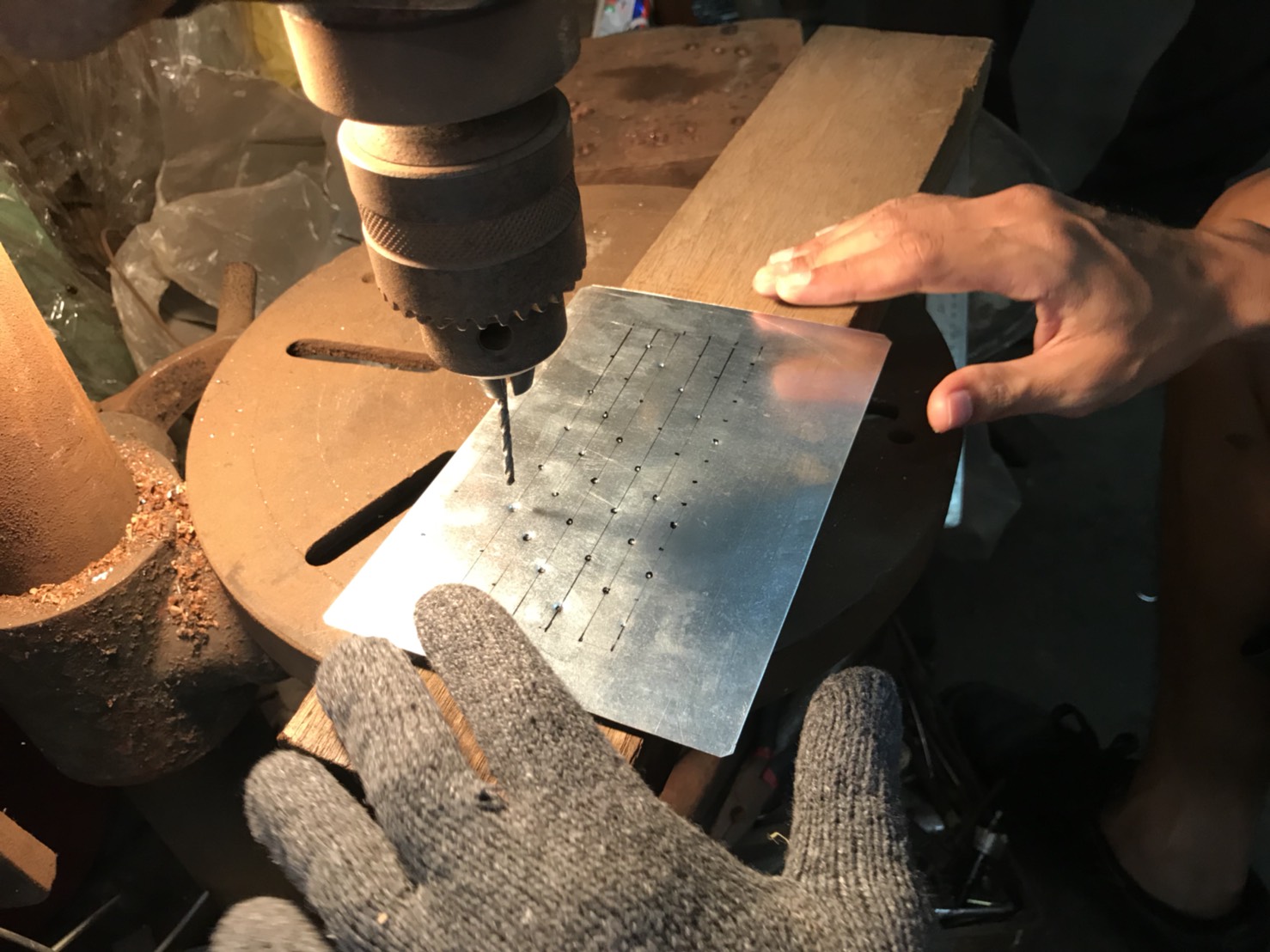
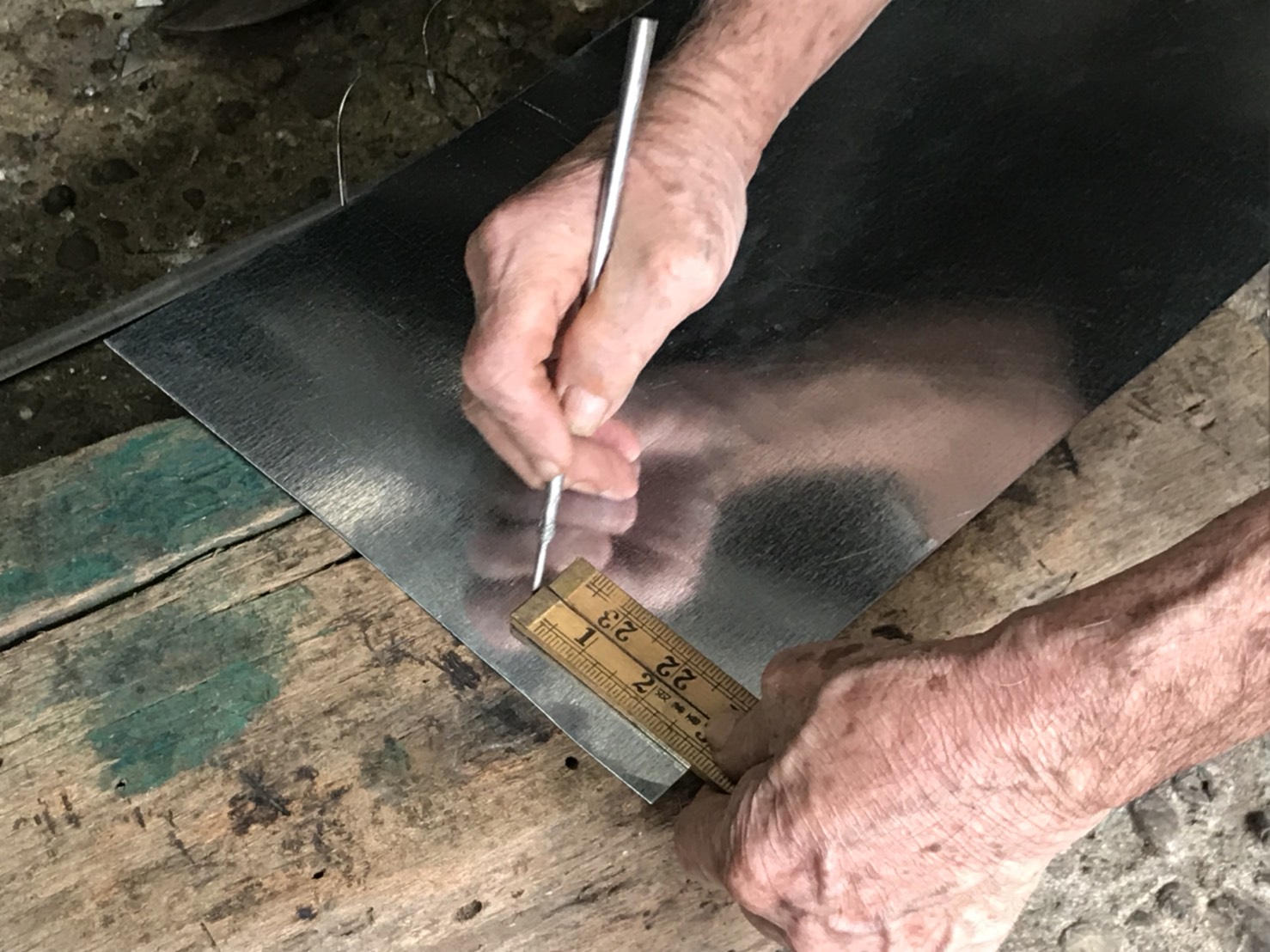
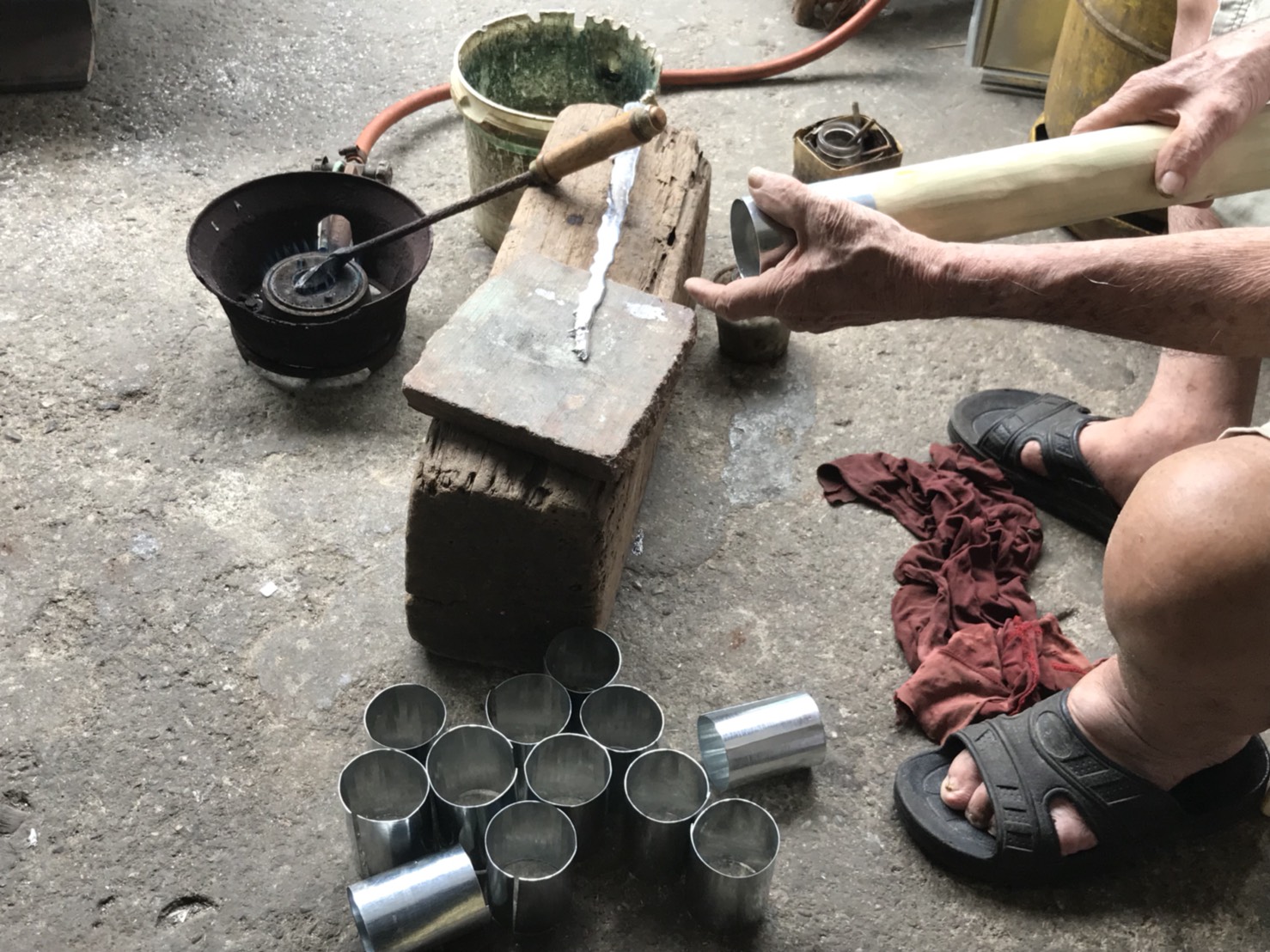
Application of Materials
Bamboo is used in a thousand different ways in Sarawak. People choose the material that surrounds them to work with for a specific tool or object. They select a suitable material and design something for a better life. Bamboo has been used to build houses, bridges, containers, food covers, baskets and trays, etc. It can be seen throughout Bornean history that bamboo has a close connection the Bornean people.
This plant is the most popular material for crafts making in Sarawak. It can be easily cultivated in tropical and subtropical areas and it is also a very fast-growing plant and can complete its growth within only a couple of months. Bamboo has suitable qualities for making crafts; it is very flexible and durability. For this reason, we are interested in this wonder plant, which plays an important role in Sarawak since ancient times.
The bamboo ladder has been an ordinary item for Bornean people since ancient times and they are a kind of craft that have been made in accordance with not only the natural surroundings but also the local culture, traditions and customs. They draw a picture of Borneo way of life and its rich heritage. We aim to convert a simple object into screen/sculpture/installation art to present Borneo culture.
Tin: There are a few tinsmiths left on Bishopgate Street, one of the oldest streets in Kuching. In 1930, the metal industry used to play important role in Sarawak. Tin production was a high demand and objects such as tin pots, utensils, letterboxes, dustbins, paraffin lamps, hunting lamps and cake tins were made. Tinsmith is a skill passed down from generation to generation.
Rope: Rope offers a modern charm and is a perfect material. It has tensile strength and is flexible enough to tie and weave. Rope is an inexpensive material to buy, but it is a versatile and creative canvas for artistic exploration.
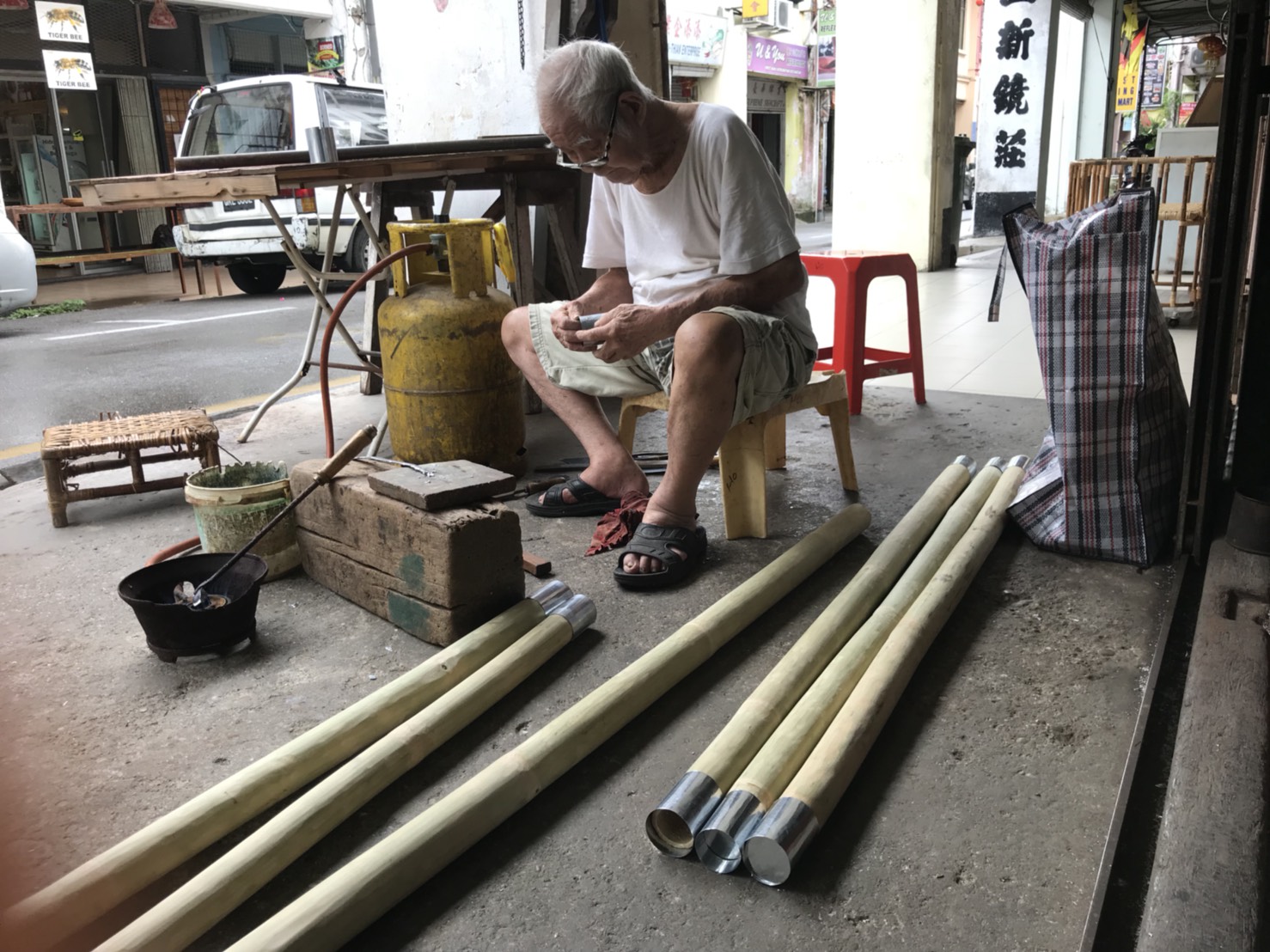
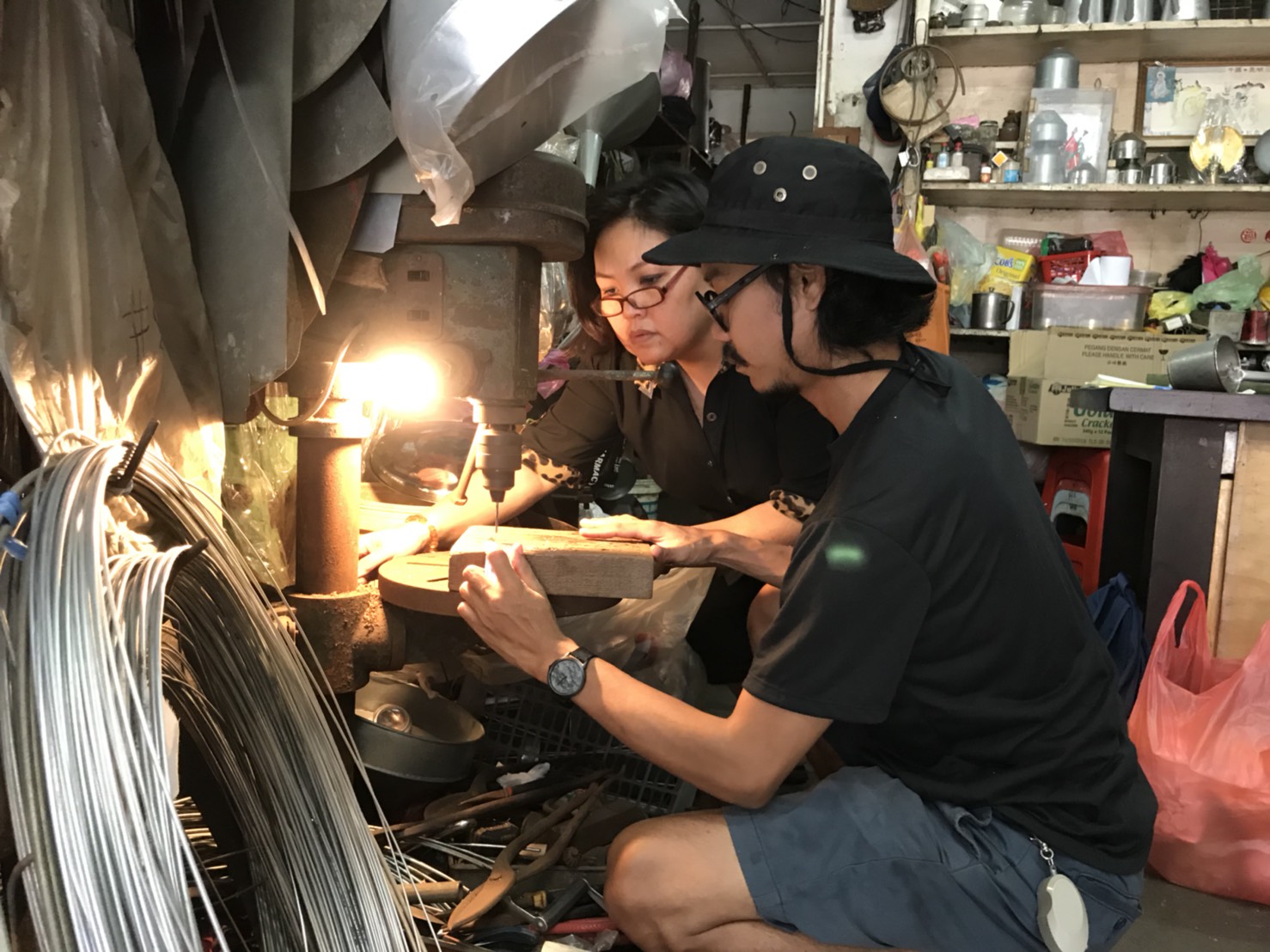
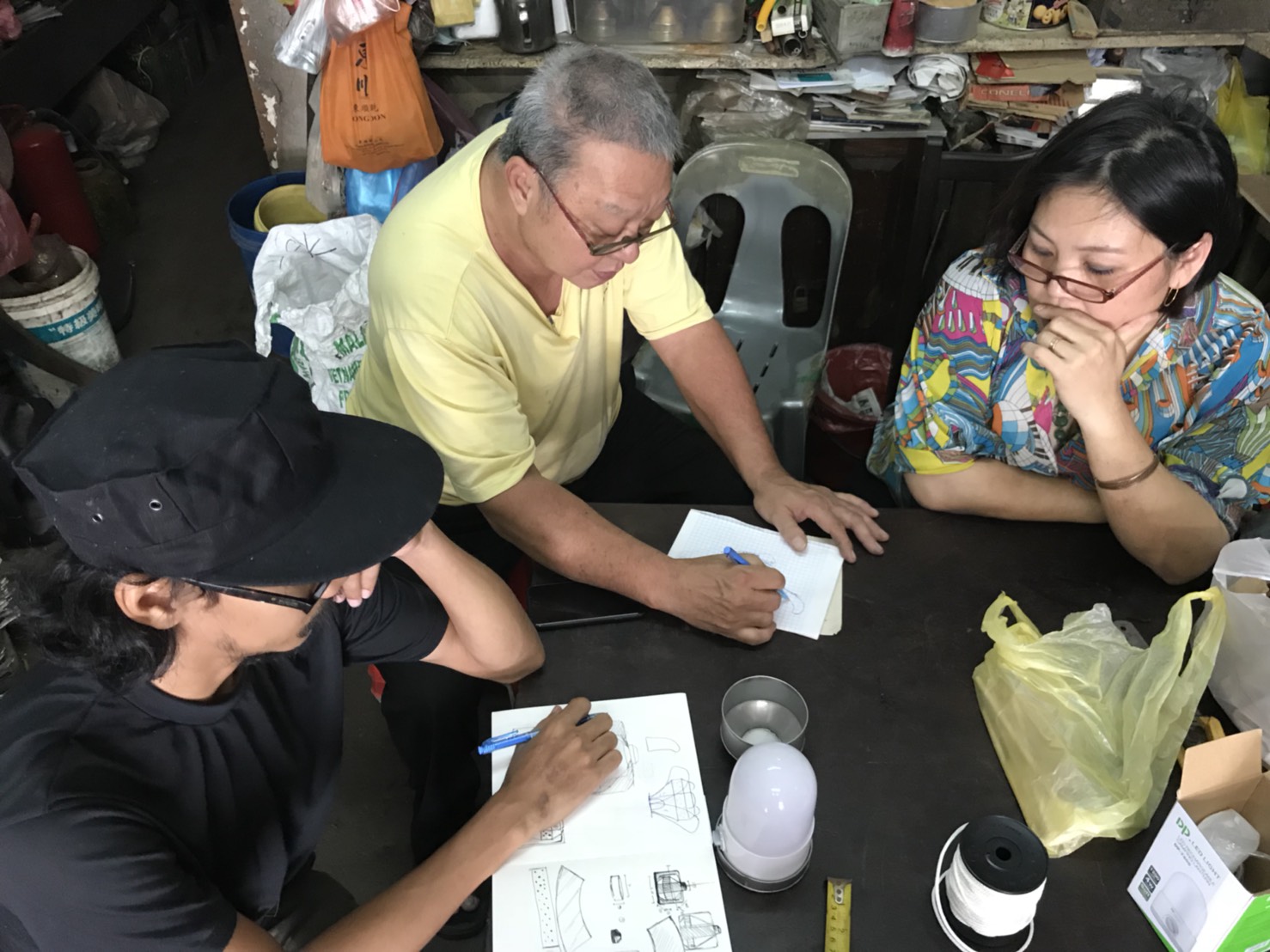


The Local Collaboration
- explore and experiment material (bamboo, tin, rope)
- explore and research ngajat dance
- select and cut bamboo in the jungle nearby Kuching
- work with carpenter at SOLO factory
- work with tinsmith at Ho NYEN FOH shop, Bishopgate Street
- experiment with weaving techniques and painting techniques


